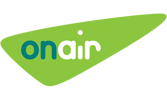OnAir Calls For US Airlines To Be Given 'Freedom Of Choice' About Inflight Usage
With the ending of the FCC’s consultation period on the extension of the access to mobile wireless services onboard aircraft, OnAir is once again urging the commission, as well as the FAA, to define the legal framework and to give the decision about inflight cell phone usage to airlines. It is also calling on the federal government not to pass legislation banning inflight cell phone use.

“The US authorities have three choices,” said Ian Dawkins, CEO of OnAir, in a news release that carefully avoids the words 'voice calls'. “You can give the airlines the right tools to allow them to decide what services to offer passengers. You can allow airlines from the rest of the world to offer cell phone services when they are in your airspace. The third option is to try to stop progress with a ban.”
It is clear that inflight connectivity is a growing market in the US, as it is across the world. Skift, the leading travel intelligence company, recently published the results of a survey showing that only 18% of air passengers in the US have used inflight connectivity, suggested a significant potential for growth. The survey also showed that 18-24 year olds are the most likely to use inflight connectivity to communicate with their friends, family and colleagues on the ground.
“People embarking on their careers have grown up being able to stay in touch wherever, whenever and however they want,” said Dawkins. “Tomorrow’s business people don’t want to be out of touch just because they are flying, particularly when there is no reason for imposing a ban.”
OnAir provides inflight cell phone and Wi-Fi services to 21 airlines around the world, including leading global airlines such as Aeroflot, British Airways, Emirates, Philippine Airlines, Qatar Airways and Singapore Airlines. Mobile OnAir, the inflight cell phone service, has flown on millions of flights across the world since 2007, with the full backing of over 100 national authorities. Airlines have the choice of turning off the voice element, leaving mobile data only. They can choose to disable the voice service permanently, or during the plane’s quiet times.
Passengers typically use Mobile OnAir for data – largely email – to update Facebook and Twitter, and for text messaging. Voice calls, which cost around $3-$4 per minute, account for slightly over 10% of total inflight usage and the average call length is under two minutes. Mobile OnAir is currently on around 20,000 flights a month and nearly 700,000 passengers connect to OnAir each month.
Dawkins continued, “Concerns about people using cell phones on planes are misplaced. Mobile OnAir started flying in 2007. Since then, across the world on millions of flights, there hasn’t been a single complaint about disruption caused by people using their cell phones, nor has there been any interference with ground networks or aeronautical systems. And that applies to flights across the world, with people of all nationalities, including Americans.”
OnAir’s is not the only voice calling for airlines to have the choice. The Telecommunications Industry Association, the Information Technology and Industry Council and the Consumer Electronics Association have all called for the authorities to allow carriers to decide what is best for them and for their passengers.
“Passengers have been using their cell phones during flights across the world for nearly seven years,” concluded Dawkins. “The US is at great risk of lagging behind.”
 Airbus Racer Helicopter Demonstrator First Flight Part of Clean Sky 2 Initiative
Airbus Racer Helicopter Demonstrator First Flight Part of Clean Sky 2 Initiative Diamond's Electric DA40 Finds Fans at Dübendorf
Diamond's Electric DA40 Finds Fans at Dübendorf ANN's Daily Aero-Term (04.23.24): Line Up And Wait (LUAW)
ANN's Daily Aero-Term (04.23.24): Line Up And Wait (LUAW) NTSB Final Report: Extra Flugzeugbau GMBH EA300/L
NTSB Final Report: Extra Flugzeugbau GMBH EA300/L Classic Aero-TV: 'Never Give Up' - Advice From Two of FedEx's Female Captains
Classic Aero-TV: 'Never Give Up' - Advice From Two of FedEx's Female Captains



